CyberPower: 4.0 GHz QX9770 and SLI GTX 280s
by Matt Campbell on August 22, 2008 4:00 AM EST- Posted in
- Systems
Exterior
The system arrived in a plain white box labeled "Personal Computer". There were no logos or other identifying marks for CyberPower other than the packing label.
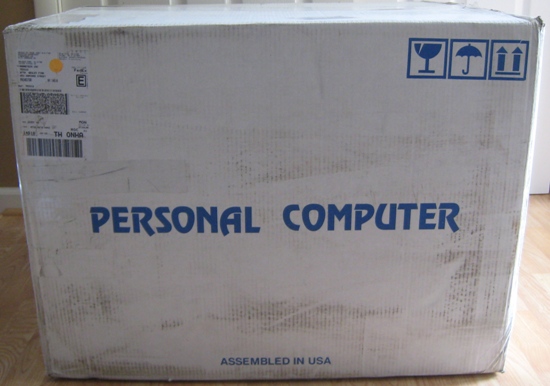

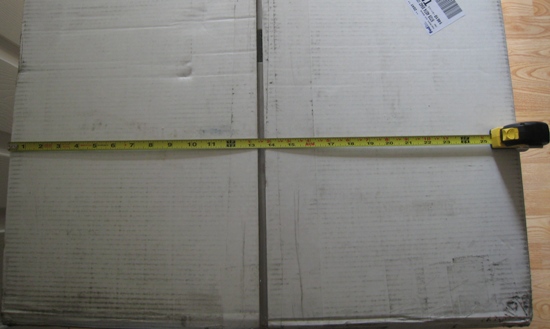
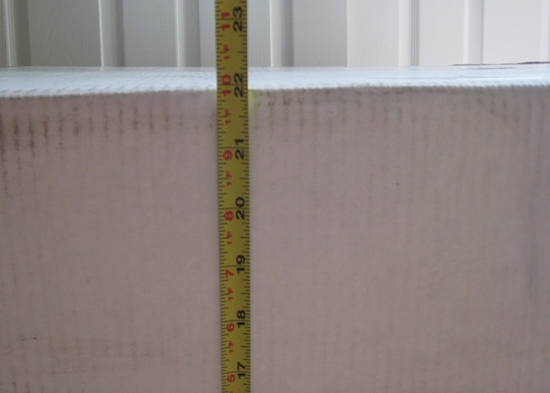
Let me state here and now, I've carried a bunch of big PC boxes including a couple Cosmos cases, and this one was the biggest and by far the most unwieldy. Part of the reason is that the PC itself is still inside the original case box, inside the shipping box! This is so the keyboard, mouse, booklets, and so forth can get packed on top. CyberPower, for the love of God, please, please separate the shipment, or at least put handles in the box! As a consumer, this matters for two reasons: One, it's hard to get your new PC safely in the house, and two, the larger and harder to handle the package, the higher the probability the system is going to get damaged en route to your door. Ours, thankfully, did arrive in decent shape.
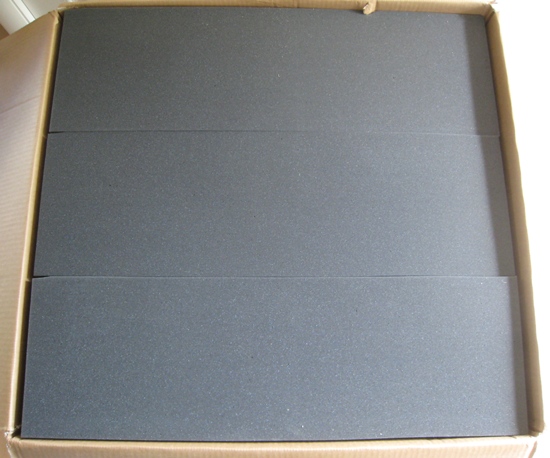
Lots of foam…
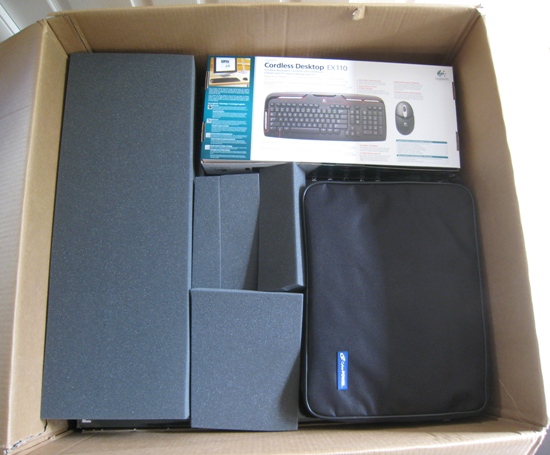
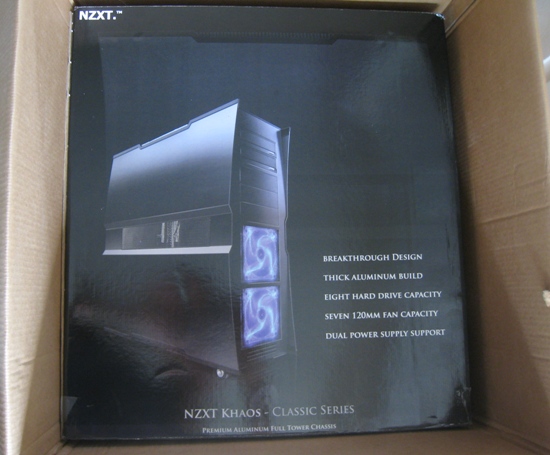
Now that the monster box is open, the case box can be opened.
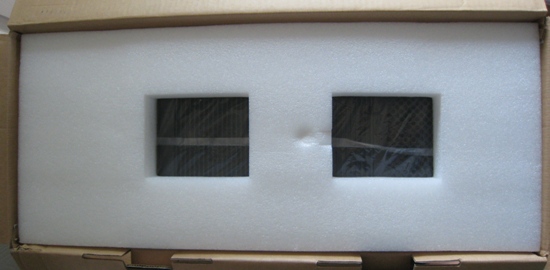
Upon removal from the box, one of the metal feet fell off and the other was loose, but once the screws were back in they were fine.


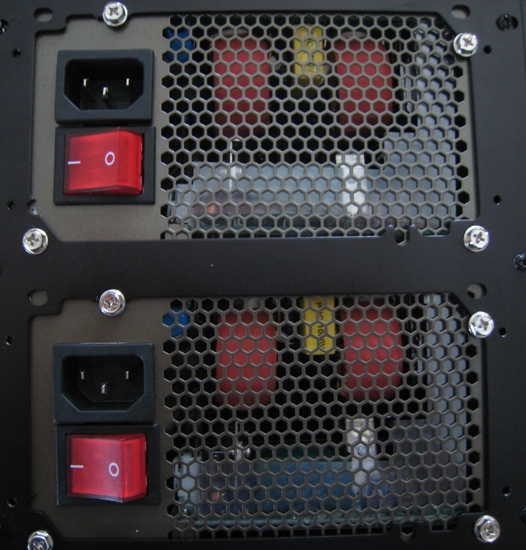
More Power…

These ports are on the top, not the front
There was no owner's binder or other system manual solution included, but a large number of cables, connectors, software disks, games, and a T-shirt, all in a carrying case. Frankly, for a system in this price bracket, we expect to see something better, even if it's a just a simple thank-you letter with support information.

The case itself is well constructed, with rubber around the removable panel edges to dampen vibration and prevent injuries. The CyberPower logo is displayed prominently in a tasteful way, and the digital front panel with fan speed control is interesting (but quite a few segments were not operational). A handle is included on the rear, but is more of a hazard than a help - it has no 90 degree stop and not enough clearance to the top of the case, so it essentially crushes your fingers if you're not at the right angle.

Ouch…
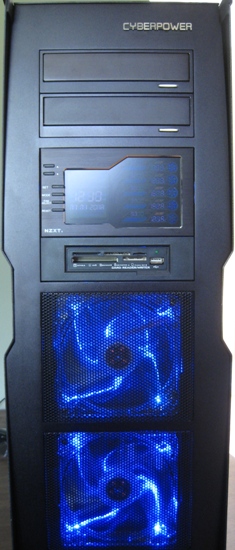
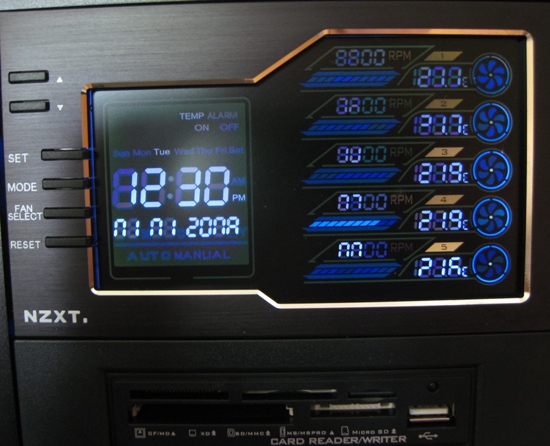










30 Comments
View All Comments
JarredWalton - Saturday, August 23, 2008 - link
Eh? My gaming PC right now is X38 with 3870 CrossFire. That list I just posted was a recommendation for a current setup that would use 4870X2 (or even Quad-CrossFire if you're daring). I think it's a reasonable recommendation for a high-end system right now. If you prefer NVIDIA SLI, go with a couple GTX 260 cards and a 790i motherboard.strikeback03 - Monday, August 25, 2008 - link
Page 8, the 3DMark Vantage Section"The CyberPower machine well and truly demolishes a respectable gaming machine (Q6600 @ 3.3GHz, SLI 3870s). " Wrong multi-GPU acronym used.
And speaking of those charts, is there a way to present the names so that the actual data bars are not only 1/4 or less of the total chart width?
JarredWalton - Saturday, August 23, 2008 - link
I'm still using the Q6600 at 3.30GHz... but it's a bit long in the tooth compared to 4850/4870. I'd like to upgrade GPUs, but divorce attorneys are expensive. :(7Enigma - Friday, August 22, 2008 - link
Count me in as well on being baffled by the choice of PSU and amount of ram. You could EASILY decrease the cost of this computer and increase potential performance by doubling the system ram and halving the power supply.And I have never understood case designs that have the PSU's on the bottom. IMO they should be installed near the top with either a back exhaust or better yet a blow-hole style outlet (you'd need the PSU manufacturer to put the outlet on the top though). Just seems pretty silly to have these monsters heating up the whole case when they should be helping to exhaust the hot air the rest of the system is producing (and the PSU's themselves). I'm wondering if this is a potential cause of the extremely high core temps...
Which brings me to the fact that I wouldn't touch this system even if I had the money to blow on it. Longevity concerns are real when operating at those levels, especially with the likelihood that buyers may not have the system in an area as cool as your testing room.
Can you guys comment on the water cooling system? Is the resevoir/design too small or poorly placed causing the high idle temperatures? Did you remove any of the mounts to see if there was something affecting heat transfer either at the cores or at the radiator?
But all in all, nice review!
MamiyaOtaru - Sunday, August 24, 2008 - link
I like having the PSU at the bottom. Using it to exhaust CPU heat fatigues it. I prefer having the PSU down at the floor, bringing in cool air, then dumping its exhaust out the back. In my box this lets it run very quietly. I've still got two 120mm fans exhausting heat from behind the CPU which isn't hot at all.This way I don't have CPU heat in the PSU, and I don't have a lot of PSU heat in the CPU (most goes out the back). But then I don't have two 1000W monsters.
Matt Campbell - Friday, August 22, 2008 - link
Here's a link to the cooler used in this system: http://www.northq.com/products/coolers/nq3580.html">http://www.northq.com/products/coolers/nq3580.htmlIt's small and compact, and the radiator mounts in front of a 120mm rear exhaust fan. There's no doubt in my mind that the amount of hardware in the case contributes to high idle temperatures, and that a large external water cooling system would decrease temperatures considerably (but wouldn't be such a slick in-case solution). NorthQ also offers a dual-radiator design (the 3590), but it wouldn't fit in the NZXT case, which is the only option for the Xtreme XI.
7Enigma - Friday, August 22, 2008 - link
Do you think something like the Thermalright Ultra 120 extreme (or whatever the current best air cooled solution) would actually offer better cooling that the nq3580?I know water can carry much more heat away than air, but I wonder if in this case that is actually hurting the temps as it's also being circulated back onto the cores at an elevated temperature.
Even better for this behemoth of a system would probably be to take a page from Dell or other large manufacturer that uses the shroud to pull "protected" air from outside the case, directly over the core, and out again. This would prevent the air from being warmed considerably by the other components.
7Enigma - Friday, August 22, 2008 - link
Forgot to add it looks like the PSU fan is partially blocked by the Cyberpower metal "thing". What the heck is the purpose of that piece, and why is it obstructing the fan?7Enigma - Friday, August 22, 2008 - link
Upon further looking at the pictures (for some reason the last picture in the internals is not coming up) it appears that the water cooling is only for the CPU correct? And that the small 90-120mm radiator where a normal external case fan would be is the sole way of dissapating heat? So there really is no water "block" of liquid and only the small amount of liquid in the lines is absorbing the heat?In a system with 2 280's, 2 1k PSU's, 4 HD's, and 2 optical drives, I could easily see how the cooling system would not be up to the task (due to all the heat soak prior to getting to the CPU cores). I would think an external block with radiator would be immensely more efficient, though you would of course lose the coolness factor of having it all in a single case....
JarredWalton - Friday, August 22, 2008 - link
The cooling is sufficient I think, for everywhere except perhaps the CPU. I'd wager that an Ultra-120 eXtreme would beat it, but that's just a guess. As for the rest of the comments, while two PSUs is certainly overkill for this particular configuration, doubling the RAM will hardly have an impact on most things. I've got a 4GB system and a 2GB system (64-bit and 32-bit), with similar parts elsewhere. Unless I really open a LOT of applications (and 32-bit ones at that, since there are very few 64-bit apps), I couldn't tell them apart.